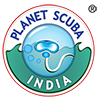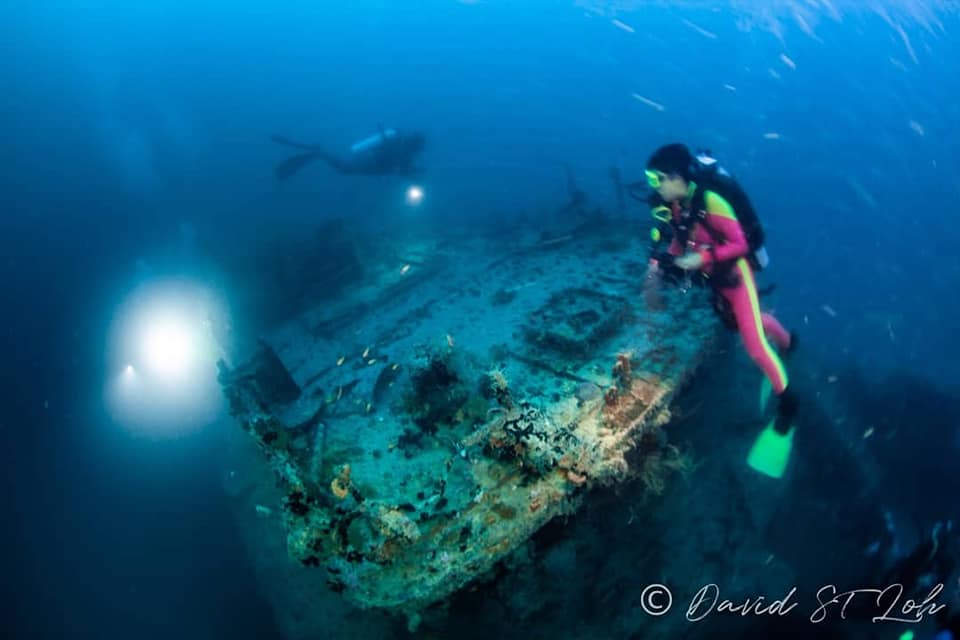Wreck diving is a type of recreational diving where shipwrecks are explored. Although most wreck dive sites are at shipwrecks, there is an increasing trend to scuttle retired ships to create artificial reef sites.
A shipwreck is attractive to divers for several reasons:
- it is an artificial reef, which creates a habitat for many types of marine life
- it often is a large structure with many interesting parts and machinery, which is not normally closely observable on working, floating vessels
- it often has an exciting or tragic history
- it presents new skill challenges for scuba divers
- it is part of the underwater cultural heritage and may be an important archaeological resource
- it provides a first-hand insight into context for the loss, such as causal connections, geographical associations, trade patterns and many other areas, providing a microcosm of our maritime heritage and maritime history
The Advanced Wreck Diving Handbook-Gary Gentile sub-divides wreck diving into three categories:
- Non-penetration diving (ie. swimming over the wreck)
- Limited penetration diving, within the “light zone”
- Full penetration diving, beyond the “light zone”
Each succeeding level involves greater risk, and therefore will normally require greater levels of training, experience and equipment.
Non-penetration wreck diving is the least hazardous form of wreck diving, although divers still need to be aware of the entanglement risks presented by fishing nets and fishing lines which may be snagged to the wreck (wrecks are often popular fishing sites), and the underlying terrain may present greater risk of sharp edges.
Penetration within the light zone presents greater hazards due to overhead and greater proximity of the wreck’s structure, but because of the proximity of a visible exit point, and some amount of external light, those hazards are more manageable. However, there is clearly a much greater risk of entanglement and siltout inside of the structure, as well as the requirement to move laterally to a defined exit point before one can surface in the event of an emergency.
Full penetration involves the greatest level of risks, including the risk of getting lost within the structure, the risk of complete darkness in the event of multiple light failures, and the inability to escape unassisted in the event of a disruption to air supply.
It is Planet Scuba India’s ongoing initiative to locate wreck diving sites along the Indian coastline.
DIVE INSTRUCTORS
Trust is one of the most difficult things to first develop and then maintain in any relationship-siblings, parent-child, student-teacher, or couples. Ask anybody who’s ever been cheated on by a partner, emotionally or physically. As Shakespeare said, “Love all. Trust a few”.
Given the lack of knowledge people have for a developing sport like scuba diving, it is only natural that the most common fear that people diving for the first time have is “How will I breathe underwater” or “I’m gonna definitely get attacked by sharks” (No thanks to Steven Speilberg)
Thus, Scuba diving instructors, have NO problem gaining the trust of their diving group or students.
So, anyone adventurous enough to give scuba diving a shot expects that he is with someone who knows more than him! Trust is never an issue for instructors. Students join a dive course assuming that their instructor knows more than them and can guide them safely through an underwater expedition. This phenomena puts a great deal of pressure on instructors as expectations are already high and its up to the instructor to make diving either an individual’s passion or his worst experience ever!
As GianRico Murredu, Course Director at the ADA(Andaman Diving Academy) puts it “ Being an instructor is not about being an underwater tour guide. Instructors already have their students’ trust. Dive instructors should be empathetic enough to understand each student’s needs and find a way to impart the same information to a heterogeneous group making sure that each student can clearly understand each concept.”
Loving what you do vs. getting paid big bucks
“There are three ingredients in the Good Life-Learning, Earning and Yearning”, said Christopher Morley.
A brief interactive session with the graduates of the second IDC batch at Planet Scuba India’s Andaman Diving Academy got me thinking What is more important? whether I like what I do or how much I get paid?
A very wise young woman I know who prefers being anonymous said, “The MONEY-That way even if you hate work at least you can afford the plastic surgery to put a smile on your face!”
Our new instructors had no such questions in their heads though. As Madhu says, “Diving is not work for me, it’s my PASSION!” Bring up the financial aspect and he just smiles and says, “When you do what you love the money comes!”
Other interesting instructors I have met include a former member of the Queen’s Army, and a software engineer from Bangalore who started off as instructor by teaching part time.
So, I have surrendered myself to the idea of doing what you love-excelling at it and making the big bucks as opposed to having to love what I do and affording the plastic surgery for that smile that wont reach my eyes!
THE “DISCOVER SCUBA DIVING(DSD)” EXPERIENCE
The Discover Scuba Diving Course is like the introduction to scuba diving-the bumper cars rush for a first time driver- and the perfect step one experience for any beginner apprehensive to block a lump sum for their PADI license.
Prior to signing up, our instructor explained to us the 4 thrills of scuba diving-weightlessness, breathing in an unfamiliar environment, observing different life forms and the aquatic beauty in general and donning equipment that resembles a space suit!- adding that we will get to experience only 3 of those in the pool. Also, that all NASA astronauts have to be certified divers.
The DSD is a 5 hour session- an hour in the classroom and 4 hours in the pool.
Diving with me last Saturday were Shyamala, Prasanna, Narayan and Shirley. Of the 5 of us Shyamala, Prasanna and Shirley are non swimmers and had only ever dipped their legs in a pool upto their knees!
The most fascinating reactions to the DSD for me, were those of Prasanna and Shyamala as both otherwise claim to suffer from hydrophobia.
“It was amazing” was Prasanna’s one line summary.
“I was initially scared that I wont come up in the water with my equipment on, but I am now inspired to learn how to swim”
“It was my first time underwater. This is an experience that I would love for my son to have!” is what Shyamala had to say.
Diving came naturally to Narayan, who only had to say “I fully enjoyed” and is on his way to pursuing to be a dive master.
Shirley claims that she did initially panic, but was soon enough fascinated by how easily one could breathe underwater. She went on to say that “This is something thrilling that I will encourage everyone to try at least once”
On the whole my last first time is something I’m always going to remember. Considering my left arm is paralyzed, it was a blessing that our instructor was always at an arm’s length. I do now realize that diving isn’t as physically demanding as I imagined it would be. “If I can do it-you can do it!” Also, you get to lose 900 calories while you’re enjoying yourself underwater-it doesn’t get any better than that.
IDCing
It seems just like yesterday that the IDC in Andamans started. But already we are at the tail end of the 2 weeks course. One more day and then the mock exams begin. Fresh candidates almost halfway there to become full fledged instructors. On the 30th they will become qualified PADI Open Water Instructors. Then there is the upcoming party happening on the 2nd at Havelock. Hope to see you all there.


